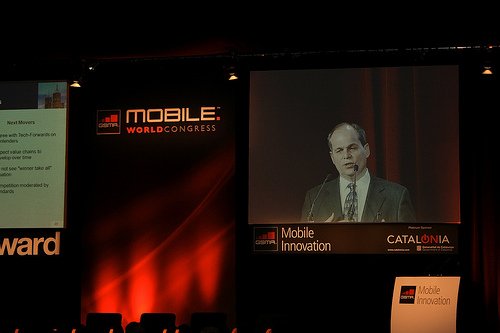INTERVIEW: Larry Stessel, CMO of i2Telecom, talks to voip.biz-news about a new mobile VoIP solution being readied for launch.
The new technology will allow users to make low-cost international calls from anywhere in the world using one SIM card.
i2Telecom’s MyGlobalTalk was the winner of voip.biz-news’ Product of the Year Award 2008.

i2Telecom’s MyGlobalTalk (MGT) launched in the US last June as a Beta version for BlackBerry and non-smartphones.
It allows users to bypass their current phone providers’ high international rates and use i2Telecom’s low VOIP Digital Service rates for international calls.
Since then, support for MGT has expanded and now works on most smartphones – Blackberry, Android, Symbian or Windows devices, with the iPhone expected shortly – plus any cell phone, land line or computer.
Larry Stessel, CMO of i2Telecom, told voip.biz-news that the current version of MGT worked "perfectly" for international calls made from the US.
But he said that within the next few months new technology is to be introduced that allows users to call from anywhere in the world using one SIM card.
 |
| Larry Stessel, CMO i2Telecom |
MGT’s goal has been to duplicate the ease with which callers’ were able to phone anywhere within the US – regardless of which state they were in – simply by dialling the number and not worrying about high call rates or complicated call-back systems.
i2Telecom is also preparing a widgets launch which will allow MGT to be used from Outlook, iGoogle or Facebook.
"A lot of companies offer the ability to call from overseas for reduced rates," said Stessel.
"But the technology is often based on call-back systems. We wanted to create something simple.
"We don’t want people to be carrying a pack of SIM cards when they travel overseas.
"What we wanted to do was figure out a way to duplicate the American system.
"In the next couple of months we will be offering a single SIM card that allows users to make calls abroad at the lowest price."
iPhone Support Soon
When using a smartphone the application auto detects any international call being made and instantly reroutes it over the MyGlobalTalk Digital Network.
Stessel, a 30-year veteran of the music industry, said they were still awaiting approval of their application to Apple’s app store.
But he said the beta worked "phenomenally" on the iPhone, with really fast connection times and crystal clear call quality.
When the solution is used on home or business lines, callers have to dial an access number, then the international number before being connected.
Stessel said the seed for MGT came from another of i2Telecom’s products, a flash drive Internet phone service called VoiceStick.
He said when users sign up for that service they receive a 10-digit DID number as part of the package.

"We realised that we were missing out a bit on the DID number and over the course of one day we started talking about its possibilities," he said.
"We realised we could give customers the ability to call from any phone to any number at reduced rates.
"The more we talked about it, the more excited we became and by the end of the day we had come up with MyGlobalTalk."
That was in October 2007. Stessel said that over the next year i2Telecom’s technicians created the code that enabled MGT to be a one-touch call on smartphones.
Users simply go into their contacts, select the one to call and the call goes through.
By the beginning of September 2008, the Blackberry and Windows versions were completed.
"We wanted to remove the step of dialling 10-digit numbers and then an international number," said Stessel.
Aggressive Marketing Campaign
Marketing of the product has so far been low-key, largely because resources have been used to create the server system and customer services. Everything is housed in a technology park in Atlanta, Georgia.
That is about to change, according to Stessel, who said an aggressive marketing campaign is being prepared for the roll-out of the new technology, which he forecast would be by the end of June.
"We have been very careful not to rush out a product overseas that is not ready," he said. "We wanted to get it right first time."
Key markets for MGT are:
- SMBs – companies ranging from 1 up to 2000 employees
- Immigrants
- Military
Stessel said the i2Telecom team really understood business users’ needs.
He said MGT could drastically reduce the cost of communications for enterprises – whether it was for calls abroad from the US or for employees who had to use their mobiles outside the US.
"I don’t think we have a competitor," he said. "You can talk about Fring all day long, but there are complications with it. I think we are the best app on the market."





















